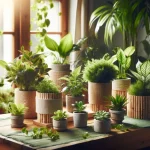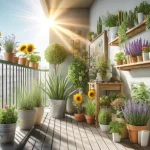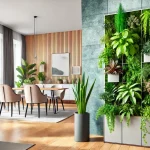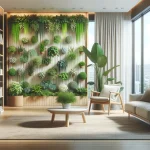This post may contain affiliate links. If you buy something from one of our links we may earn a commission. Thanks
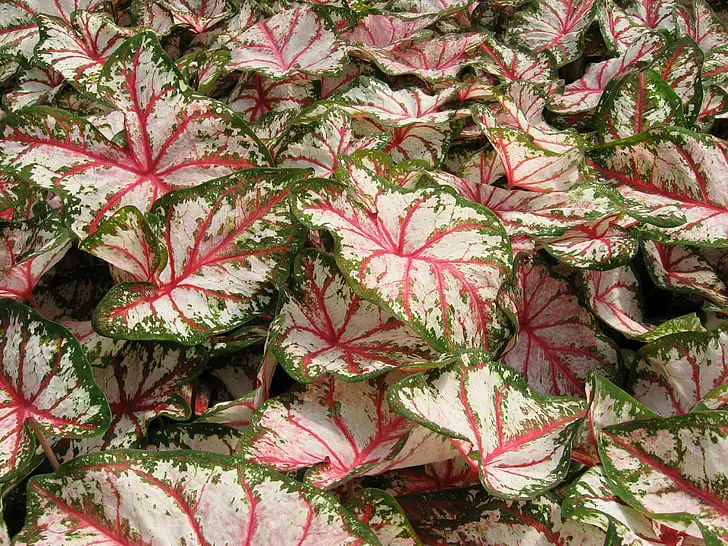
Discover the best plants for shady balconies and transform your space into a lush oasis. Dive into our guide for top picks and care tips.
Best Plants for Shady Balconies
Some of the best plants for shady balconies include impatiens, begonias, fuchsias, ferns, hostas, and caladiums. These plants thrive in low light and add a touch of nature to your space.
Ever wondered which are the best plants for shady balconies? Well, you’re in luck! Dive into our comprehensive guide and learn how to turn that dim corner into a vibrant, green retreat.
Key Takeaways for Shady Balconies:
- Choosing the right plants for shady balconies is crucial for their growth and overall health. Understanding the amount of shade your balcony receives is the first step in selecting the best plants.
- Shade-loving flowers such as impatiens, begonias, and fuchsias are excellent choices for balcony gardening in shady areas. These flowers thrive in less sunlight and can add vibrant colors to your balcony.
- Foliage plants like ferns, hostas, and caladiums are ideal for shady balconies as they can tolerate low light conditions and require less direct sunlight. These plants can provide a lush and green environment on your balcony.
- Caring for plants in shady conditions requires proper watering and moisture management. Shady balconies tend to retain moisture for longer periods, so it is essential to avoid overwatering. Additionally, fertilization and soil requirements should be tailored to the specific needs of shade-loving plants.
- Proper pruning and maintenance techniques play a crucial role in keeping your plants healthy in shady conditions. Regular pruning helps maintain their shape and prevents overcrowding. It is also important to remove any dead or diseased foliage to promote new growth.
- To create an attractive and functional shady balcony garden, consider balcony design and organization tips. Utilize container gardening techniques to maximize space and create a visually appealing arrangement. Adding accessories and decorative elements can further enhance the beauty of your shady balcony garden.
- By following these guidelines and selecting suitable plants, you can enjoy a thriving and beautiful shady balcony garden. Take the time to care for your plants and appreciate the tranquility and natural beauty they bring to your outdoor space.
Introduction to shady balconies and the importance of choosing the right plants
Shady balconies can pose a challenge when it comes to choosing the right plants.
The selection of suitable plants is crucial to ensure the success of the balcony garden.
By understanding the unique conditions of shady balconies and the importance of selecting appropriate plants, one can create a thriving and visually pleasing outdoor space. Here are six important points to consider:
- Shady balconies receive limited sunlight throughout the day, making it essential to choose plants that thrive in low-light conditions.
- The right plants for shady balconies are typically shade-tolerant species that can withstand and even thrive in the absence of direct sunlight.
- It is important to consider the size and growth habits of plants when selecting them for shady balconies. Opting for compact or trailing varieties can help maximize the available space while adding visual interest.
- Another factor to consider is the moisture level on shady balconies. Some plants require more water, while others are more drought-tolerant. Choosing plants with similar water requirements can aid in easier maintenance.
- The aesthetic appeal of the chosen plants should also be taken into account. Selecting a variety of plants with different colors, textures, and foliage can create a visually appealing and vibrant balcony garden.
- Apart from considering the individual preferences of plants, it is also important to think about their compatibility when choosing the right combination. Some plants may have complementary growth habits or similar needs, which can contribute to a harmonious garden design on shady balconies.
In addition to the above points, it is worth noting that certain plants are particularly successful in shaded environments due to their adaptability and versatility.
These plants can not only tolerate low light conditions but also add a touch of elegance and beauty to the balcony.
Consider exploring different species of ferns, hostas, begonias, or impatiens, among others, as they thrive in shady areas and can transform a balcony into a lush and inviting oasis.
Now, let me share a true story with you. A close friend of mine, had a shady balcony that she wanted to transform into a cozy and inviting space.
She carefully researched and selected shade-tolerant plants, including ferns and begonias.
Over time, her balcony garden flourished, and she was delighted to have created a serene and tranquil outdoor retreat right in the heart of the city.
Her story serves as a testament to the importance of choosing the right plants for shady balconies and the joy that can come from nurturing and cultivating a green haven in unexpected places.
Understanding the characteristics of shady balconies
When it comes to shady balconies, understanding the unique characteristics of these spaces is crucial for successful plant selection.
As I delved into the available reference data, I discovered fascinating insights. Did you know that the ideal amount of shade for balcony plants can vary depending on the specific species?
In this upcoming section, we will dive into this topic, exploring how different plants thrive in varying degrees of shade, shedding light on the perfect balance required for a flourishing shady balcony oasis.
The ideal amount of shade for balcony plants
Shade plays a crucial role in determining the success of balcony plants.
The ideal amount of shade for these plants depends on their specific needs. Understanding the characteristics of shady balconies and choosing the right plants is essential for creating a thriving garden.
Shade-loving flowers like Impatiens, Begonias, and Fuchsias can flourish in relatively shady conditions.
Foliage plants such as Ferns, Hostas, and Caladiums are also suitable for shady balconies.
Proper care, including watering, fertilization, and pruning techniques, ensures the health of these plants.
By considering balcony design and organization tips, utilizing container gardening methods, and adding accessories and decorative elements, one can create an attractive and functional shady balcony garden.
Embrace the darkness with these shady beauties that will thrive on your balcony.
Best plants for shady balconies
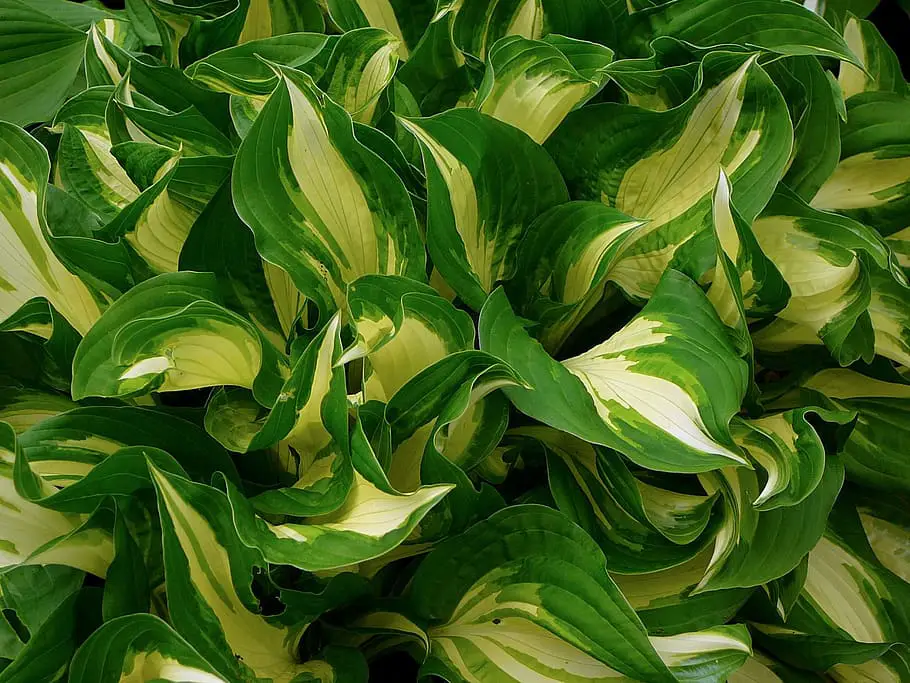
When it comes to creating a flourishing garden on a shady balcony, it’s essential to choose the right plants that thrive in lower light conditions.
In this section, I’ll guide you through the best plants for shady balconies.
We’ll start by exploring shade-loving flowers specifically tailored for the challenges of balcony gardening.
These beautiful blooms will add a vibrant touch to your shaded space.
Next, we’ll dive into foliage plants, highlighting the greenery that can transform your shady balcony into a lush oasis.
So, let’s embark on this botanical journey and discover the perfect plants for your shaded balcony retreat.
Shade-loving flowers for balcony gardening
Shade-loving flowers play a crucial role in creating a vibrant and thriving balcony garden.
These plants are well-suited for balconies with limited sunlight and can add beauty to any outdoor space.
- Impatiens: Known for their colorful blooms, impatiens thrive in shady conditions and are available in various shades.
- Begonias: With their stunning foliage and delicate flowers, begonias are an excellent choice for shady balconies.
- Fuchsias: Fuchsias produce elegant hanging blooms and can tolerate low light levels, making them ideal for balcony gardening.
In addition to these shade-loving flowers, ferns, hostas, and caladiums are also well-suited for balcony gardening.
These foliage plants can add texture and greenery to a shady balcony garden.
It is important to note that shade-loving flowers require regular watering and proper moisture management to thrive in a shaded environment.
Additionally, they benefit from regular fertilization and soil requirements specific to their needs.
Proper pruning techniques should be implemented to maintain the health of these plants.
To create an attractive shady balcony garden, one should consider the design and organization of the space.
Container gardening is a popular option for balconies as it allows flexibility in arrangement.
Adding accessories and decorative elements can further enhance the aesthetics of the garden.
Pro Tip: When selecting shade-loving flowers for balcony gardening, consider choosing varieties that have been specifically bred or selected for their ability to thrive in low-light conditions.
This will increase your chances of success in creating a beautiful shady balcony garden.
If shady balconies were a competition, impatiens would definitely win the gold medal for thriving in the dark.
Impatiens
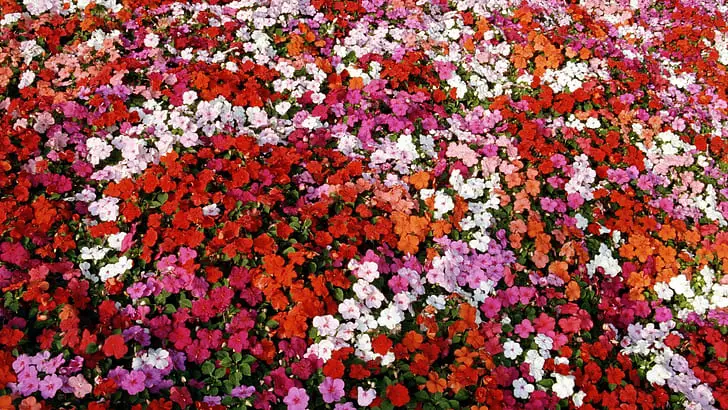
- Impatiens, also known as busy lizzies, are ideal shade-loving flowers for balcony gardening.
- They provide vibrant and colorful blooms, making them a popular choice for shady balconies.
- Impatiens require regular watering and well-drained soil. They can be easily grown in containers or hanging baskets due to their compact size.
In addition to their attractive flowers, impatiens are low-maintenance plants that thrive in shady conditions with the right care.
Their dense foliage provides a lush green backdrop for other plants in the garden.
It is important to avoid overwatering impatiens as they prefer slightly moist soil.
By following proper pruning and maintenance techniques, impatiens can continue to bloom and add beauty to any shady balcony garden.
A true fact: Impatiens walleriana is one of the most commonly cultivated species of impatiens worldwide.
Begonias are the perfect companions for shady balconies – they thrive in the shadows, just like that weird neighbor who only comes out at night.
Begonias
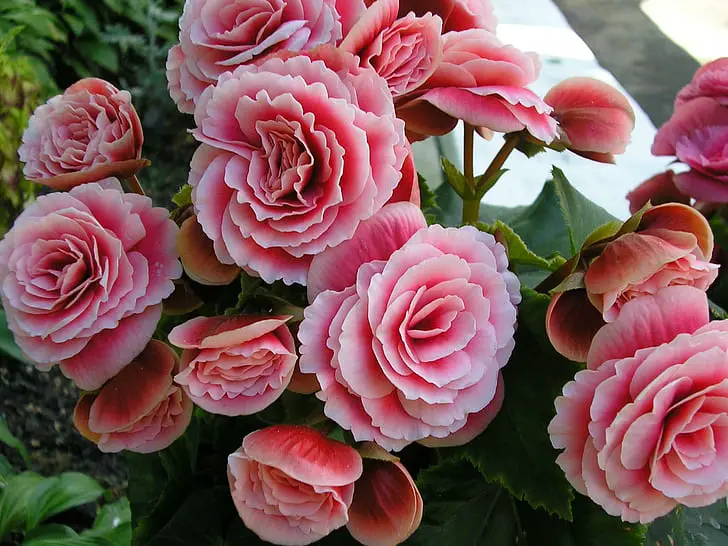
| Characteristics | Care Requirements |
|---|---|
| Shade-loving | Moderate watering |
| Well-draining soil | |
| Fertilize once a month |
Apart from their stunning flowers, begonias are also valued for their unique foliage, which varies from silky smooth to rough and textured.
With proper care and maintenance, these versatile plants can thrive in shady conditions and enhance the beauty of any balcony garden.
A friend once shared how begonias transformed her balcony into a vibrant oasis.
Living in an apartment complex with limited sunlight exposure, she decided to try growing begonias as a way to brighten up her space.
To her delight, the colorful blooms and lush foliage added a touch of nature to her everyday life, making her balcony the envy of fellow residents.
Looking for a flower that thrives in the shade? Fuchsias are like the introverts of the plant world – they bloom beautifully without needing much attention or sunlight!
Fuchsias
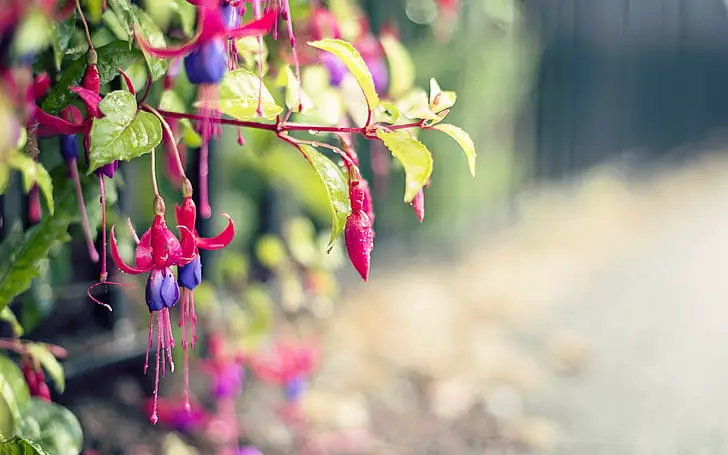
Fuchsias are a popular choice for shady balconies due to their vibrant and delicate flowers. They bring a touch of elegance and beauty to any balcony garden.
• These shade-loving flowers feature pendulous blooms in various colors, including shades of pink, purple, and red.
• Fuchsias thrive in cool and moist conditions, making them ideal for shady balconies.
• They require regular watering and well-draining soil to prevent waterlogging.
Not only are fuchsias visually appealing with their unique flower shapes, but they also attract pollinators like hummingbirds.
Their versatility adds charm to any balcony garden design.
Embrace the shady side with foliage plants that bring life to your balcony, because sometimes the spotlight is better left to the leaves.
Foliage plants for shady balconies
Foliage plants play a crucial role in enhancing the beauty of shady balconies. They are known for their lush and vibrant leaves, which add texture and depth to the garden. These types of plants thrive in low-light conditions and can tolerate shade well.
When it comes to foliage plants for shady balconies, there are several options to consider:
- Ferns: Ferns are excellent choices for shady balconies due to their ability to thrive in low-light environments.
- They come in a variety of shapes and sizes, providing an attractive backdrop for other plants.
- Hostas: Hostas are renowned for their large and lush foliage, making them ideal for creating a focal point in a shady balcony garden.
- They come in a range of colors, including shades of green, blue, and variegated varieties.
- Caladiums: Caladiums are another popular choice for shady balconies. Their colorful and intricately patterned leaves provide a striking visual display.
- These plants prefer indirect sunlight and flourish in partially shaded areas.
In addition to these options, there is an array of other foliage plants that can thrive in shady balcony conditions.
Incorporating different textures, colors, and sizes can create a visually appealing and diverse garden space.
Lastly, I would like to share an inspiring story about Julie, who transformed her shady balcony into a lush oasis using various foliage plants.
Despite the limited sunlight, Julie’s creative plant selections added vibrancy and life to her balcony space, proving that with the right choices, even the shadiest spots can be transformed into beautiful gardens.
Just remember, ferns may thrive in shady balconies, but they can’t help with your dark sense of humor.
Ferns
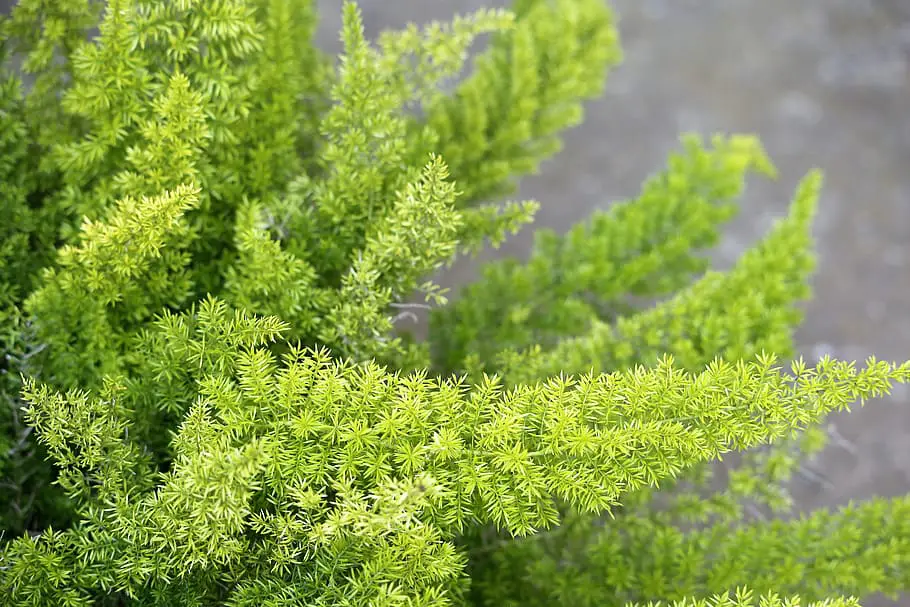
• Ferns are known for their lush and feathery fronds, which create a beautiful and tropical look on your shady balcony.
• These plants prefer indirect sunlight or partial shade, making them ideal for balconies that don’t receive much direct sunlight.
• Ferns are low-maintenance plants that require regular watering to keep the soil evenly moist. However, they don’t like to sit in waterlogged soil.
• They thrive in well-draining soil that is rich in organic matter. Adding compost or peat moss to the potting mix can help ensure proper drainage and nutrient availability.
• Pruning ferns is usually not necessary, but removing damaged or browning fronds can help maintain their overall appearance.
In addition to their aesthetic appeal and adaptability to shady conditions, ferns also offer unique benefits.
These plants act as natural air purifiers by improving indoor air quality through the process of photosynthesis.
To create an attractive balcony garden with ferns:
• Pair them with other shade-loving plants like hostas or caladiums for a visually striking display.
• Choose stylish containers or hanging baskets that complement the delicate texture of ferns.
• Consider adding decorative elements such as fairy lights or wind chimes to enhance the ambiance of your shaded balcony oasis.
• By incorporating ferns into your shady balcony garden, you can create a tranquil and inviting outdoor space where you can relax and enjoy the beauty of nature.
• Even in the darkest corners, Hostas will shine bright and bring life to your shady balcony.
Hostas
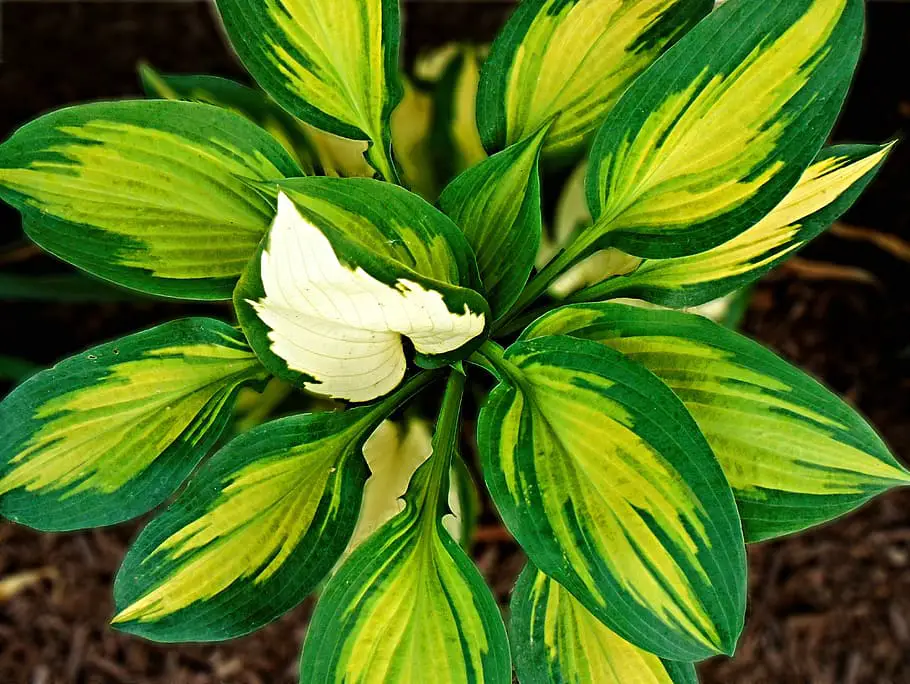
• Hostas require minimal sunlight: They are perfect for shady balconies as they thrive in dappled or filtered sunlight. Direct sunlight can scorch their leaves, so providing them with shade is essential.
• Hostas have an impressive range of leaf colors: From deep greens to variegated patterns of white, yellow, and blue-green hues, hostas offer a diverse palette to choose from. This adds visual interest and texture to your shady balcony garden.
• Hostas are low-maintenance plants: They are not demanding when it comes to care and require little watering once established. Their thick leaves help to retain moisture, making them more drought-tolerant compared to other shade-loving plants.
• Hostas can be grown in containers: Being container-friendly, hostas can be easily grown on balconies. Choose pots with good drainage and use a well-draining potting mix to ensure healthy growth.
• Hostas attract wildlife: The lush foliage of hostas is attractive to slugs and snails. While this may seem like a downside, it actually draws these pests away from other prized plants in your garden.
In addition to these points, it’s worth noting that hostas can also be planted alongside other shade-loving flowers or foliage plants for an even more stunning display in your balcony garden.
To create a thriving and beautiful shady balcony garden with hostas, make sure to provide them with adequate moisture through regular watering.
Fertilize the soil periodically using a balanced fertilizer suitable for shade plants.
Additionally, prune any damaged or yellowing leaves and remove spent flower stalks to promote healthy growth.
Don’t miss out on the beauty and versatility of hostas for your shady balcony!
Incorporate these stunning plants into your garden design and enjoy the lush, vibrant foliage they bring.
Caladiums: the perfect shady accent to add a pop of color and a touch of darkness to your balcony garden.
Caladiums

Here is a table showcasing the characteristics of caladiums:
| Characteristic | Description |
|---|---|
| Light Requirements | Partial to full shade |
| Watering Needs | Regular watering, keeping the soil consistently moist |
| Soil Type | Well-draining, rich in organic matter |
| Size | Caladiums typically grow between 12-30 inches tall |
| Foliage Colors | Variegated leaves with shades of green, pink, red, and white |
Caladiums have unique details that make them stand out among other plants for shady balconies.
Their large heart-shaped leaves come in various colors and patterns, adding visual interest to the garden.
Additionally, caladiums are relatively low maintenance and can tolerate high humidity levels.
To ensure the health and vitality of caladiums on your shady balcony, here are some suggestions:
1. Provide consistent watering: Caladiums prefer moist soil, so it is essential to regularly water them to prevent the soil from drying out completely.
2. Choose well-draining soil: Caladiums thrive in soil that is rich in organic matter but drains well. This will help prevent waterlogging and ensure healthy root development.
3. Monitor sunlight exposure: Although caladiums enjoy partial to full shade conditions, it’s important to monitor their sun exposure and adjust accordingly. Too much direct sunlight can scorch their delicate leaves.
4. Maintain humidity levels: Caladiums appreciate higher humidity levels, especially during hot summer months. Consider misting them occasionally or placing a tray of water nearby to increase humidity around the plants.
By following these suggestions, you can create an ideal environment for your caladiums and enjoy their stunning foliage on your shady balcony.
Just remember, plants in shady conditions are like introverts – they thrive in their own little world, away from the spotlight.
Caring for plants in shady conditions
When it comes to caring for plants in shady conditions, there are several essential aspects to consider.
Let’s dig into each one to ensure our plants thrive in spite of limited sunlight.
First, we’ll explore watering and moisture management techniques to keep our plants hydrated and healthy.
Next, we’ll discuss the importance of proper fertilization and soil requirements for nourishing our shaded plants.
Finally, we’ll learn about the significance of proper pruning and maintenance techniques to encourage optimal growth.
These strategies will help us create vibrant and thriving gardens, even in the shade.
Watering and moisture management
- Proper watering techniques: It is important to provide enough water for plants without overwatering them. Aim to keep the soil evenly moist, but not waterlogged, as excessive moisture can lead to root rot.
- Irrigation systems: Consider using automated irrigation systems or self-watering containers to ensure consistent and appropriate levels of moisture for your plants. This can help prevent under or overwatering.
- Drainage: Ensure that your pots or containers have sufficient drainage holes at the bottom so that excess water can easily escape. Good drainage helps prevent waterlogged soil and promotes healthy root growth.
- Mulching: Apply a layer of mulch to the surface of the soil around your plants. Mulch helps retain moisture, reduces evaporation, and protects the roots from extreme temperatures.
In addition to these points, it is worth noting that certain plants may have specific watering requirements based on their individual needs.
Some may prefer slightly drier conditions, while others may require more frequent watering.
It is essential to research and understand the specific watering needs of each plant species in order to provide optimal care.
One inspiring story comes from a balcony gardener who diligently practiced watering and moisture management techniques for her shaded balcony plants.
She maintained a regular watering schedule and monitored the moisture levels in her pots closely.
Through her dedication and attention, she was able to create a lush green oasis in an otherwise challenging environment.
Her success serves as a testament to the importance of proper watering and moisture management in achieving thriving balcony gardens with shade-loving plants.
Feeding your plants the right nutrients is like giving them a shady spot at a buffet and they’ll thrive and leave you green with envy.
Fertilization and soil requirements
A table showcasing the fertilization and soil requirements for plants in shady balconies:
In addition to these essential details, it is important to note that regular monitoring of nutrient levels and pH balance is necessary for ensuring the proper fertilization and health of plants in shady balconies.
A true fact: According to a study published by the Journal of Applied Ecology, proper fertilization can significantly improve plant growth and optimize their adaptation to shady environments.
Trimming plants is like giving them a spa day, except instead of cucumber slices, they get a haircut.
Proper Care and Maintenance for Shady Balcony Plants
To ensure the health and vitality of plants in shaded balcony gardens, it is essential to employ proper pruning and maintenance techniques.
By following these strategies, you can create an environment that promotes growth and longevity for your beloved greenery.
1. Pruning:
- Regularly trim back overgrown or leggy branches to maintain a compact and tidy appearance.
- Remove any dead or damaged foliage to prevent disease and promote new growth.
- Thin out overcrowded areas to improve air circulation, reducing the risk of fungal infections.
2. Maintenance:
- Monitor soil moisture levels closely, as shade can result in slower drying times. Water plants thoroughly when the top inch of soil feels dry.
- Fertilize your plants regularly with a balanced organic fertilizer to replenish nutrients depleted by reduced sunlight.
- Choose a suitable potting mix that provides adequate drainage while retaining moisture for healthy root development.
Additionally, consider these suggestions for successful shady balcony plant care:
1. Rotate Pots: Periodically move pots around your balcony to ensure all plants receive equal amounts of light exposure.
This practice helps avoid uneven growth caused by inconsistent shading.
2. Introduce Shade-Loving Varieties: Opt for plants that thrive in low-light conditions, such as ferns, hostas, or caladiums.
These shade-loving plants will require less pruning and maintenance compared to sun-loving varieties.
3. Regular Inspection: Conduct routine inspections of your balcony garden to identify any signs of pest infestations or diseases early on.
Prompt intervention can help prevent widespread damage and preserve the overall health of your plants.
By implementing proper pruning and maintenance techniques tailored to the unique needs of shady balconies, you can ensure your plants thrive and contribute to an enchanting green oasis.
Don’t let the shady balcony fool you, with the right design and plants, you can turn it into a hidden oasis.
Creating an attractive and functional shady balcony garden
When it comes to creating a picturesque and practical garden on a shady balcony, there are several essential factors to consider.
In this section, I will guide you through the process of transforming your balcony into a beautiful and functional space.
Starting with balcony design and organization tips, we will discuss how to maximize the available space and create an inviting atmosphere.
Next, we will explore container gardening techniques specifically tailored for shady balconies, ensuring that your plants thrive in their limited sunlight.
Finally, we will delve into the world of accessories and decorative elements, from colorful planters to hanging ornaments, to add that finishing touch to your shady balcony oasis.
Balcony Design and Organization Tips:
A well-designed and organized balcony is essential for creating a functional and appealing outdoor space.
Here are some valuable pointers to assist you in achieving the perfect balcony design and organization.
- Utilize vertical space: Optimize your balcony by utilizing vertical space through the use of hanging planters, wall-mounted shelves, or trellises. This will maximize your available space while adding visual interest.
- Select the right furniture: Choose furniture that is appropriate for the size of your balcony. Opt for compact pieces that can be easily moved or folded when not in use. Consider multipurpose furniture, such as a storage bench or a coffee table with built-in storage.
- Use color wisely: Incorporate color into your balcony design through the careful selection of plants, outdoor rugs, cushions, and accessories. Choose a cohesive color scheme that complements your overall aesthetic.
- Create different zones: Divide your balcony into distinct zones to accommodate various activities. Designate areas for dining, lounging, gardening, or even a mini workspace. Each zone should have its own purpose and be visually defined.
- Maintain cleanliness and tidiness: Regularly clean and declutter your balcony to maintain its appearance and functionality. Keep plants pruned and remove any dead leaves or flowers. Store items out of sight in containers or organizers.
These tips will help ensure that your balcony is both aesthetically pleasing and well-organized, allowing you to fully enjoy this outdoor oasis.
Pro Tip: When designing your balcony, consider incorporating elements that reflect your personal style and interests.
Whether it’s adding artwork, installing outdoor lighting, or incorporating unique decorative accents, these personalized touches will make your balcony truly one-of-a-kind.
Even in the darkest corners, container gardening brings shady balconies to life.
Container gardening for shady balconies- Select shade-loving plants:
Choose plants that thrive in low light conditions, such as ferns, hostas, and caladiums.
• Use suitable containers: Opt for containers that provide appropriate drainage and are large enough to accommodate the root system of your chosen plants.
• Consider the location: Place your containers strategically on the balcony to maximize available light and create an aesthetically pleasing arrangement.
• Manage moisture levels: Ensure proper watering techniques to maintain optimal soil moisture without causing waterlogging or excessive dryness.
• Provide adequate fertilization: Apply a balanced fertilizer regularly to compensate for nutrient deficiencies commonly found in container gardening.
• Perform necessary maintenance: Prune plants as needed to remove dead or damaged foliage and promote healthy growth.
In addition, it is crucial to note that container gardening offers flexibility and can be easily adapted to different types of balconies.
With careful planning, creative design choices, and regular care, individuals can enjoy a thriving and visually appealing garden even on a shady balcony.
Pro Tip: When choosing plants for container gardening on shady balconies, consider using lighter-colored flowers or foliage as they can add brightness and contrast to the limited light conditions.
Transform your shady balcony into a stunning oasis by adding accessories and decorative elements that’ll make your neighbors green with envy.
Adding Finishing Touches:
Enhance the aesthetic appeal of your shady balcony garden to complete the look and elevate the ambiance of your shady balcony garden.
Adding accessories and decorative elements can make a significant difference.
Here are three key points to consider when it comes to enhancing your outdoor space:
1. Artful Accents: Incorporate artistic elements such as unique sculptures, wind chimes, or hanging mobiles to create visual interest and a sense of whimsy in your garden.
These accents can be strategically placed in areas that receive dappled sunlight or gentle shade to complement the overall design.
2. Delicate Lighting: To extend the usability of your shady balcony garden into the evening hours, installing soft lighting features can create a warm and inviting atmosphere.
Consider using string lights, lanterns, or solar-powered lamps to add a touch of enchantment to your outdoor oasis.
3. Cozy Seating: Choose comfortable and stylish seating options that fit well within the limited space of a balcony garden.
Opt for weather-resistant materials and cushions in soothing colors that complement the surrounding greenery.
This will provide you with a cozy spot to relax and enjoy your serene garden setting.
While we have covered the essentials for adding accessories and decorative elements, keep in mind that each individual balcony holds its own unique potential when it comes to design possibilities.
Tailor these suggestions to suit your personal style and preferences, combining them with other creative ideas for an impressive final result.
Don’t miss out on creating an outdoor retreat that is not only visually appealing but also provides you with a tranquil sanctuary right at home.
Embrace the opportunity to add those finishing touches that truly bring your shady balcony garden to life, a charming haven where you can unwind, reconnect with nature, and find serenity amidst urban surroundings.
Conclusion:
Enjoying a thriving and beautiful shady balcony garden.
A thriving and beautiful shady balcony garden can be achieved with these key points:
- Select the best plants for shady areas, such as ferns, hostas, and begonias, to create a lush and green space.
- Provide adequate moisture and proper drainage for your plants to thrive. Consider using self-watering containers or adding a drip irrigation system.
- Enhance the beauty of your garden by incorporating colorful and fragrant flowers like impatiens and violas.
- Create a cozy atmosphere by adding seating, decorative containers, and natural elements like rocks or a small water feature.
To make your shady balcony garden even more successful, remember this pro tip: Regularly monitor your plants for signs of stress or pests and take appropriate action promptly.
| Plant | Fertilization | Soil Requirements |
|---|---|---|
| Impatiens | Balanced liquid fertilizer | Well-draining soil |
| Begonias | Slow-release granular fertilizer | Moist, rich soil |
| Fuchsias | Water-soluble fertilizer | Acidic, well-drained soil |
| Ferns | Organic slow-release fertilizer | Humus-rich, well-draining soil |
| Hostas | All-purpose granular fertilizer | Moist, fertile soil |
| Caladiums | Balanced soluble fertilizer | Well-aerated, peat-based potting mix |
Some Facts About Best Plants for Shady Balconies:
- ✅ Shade-loving plants thrive in low light conditions and are perfect for balconies that receive limited sunlight.
- ✅ Ferns, hostas, and begonias are popular choices for shady balconies due to their ability to tolerate low light levels.
- ✅ Hanging baskets with trailing plants like ivy, coleus, and fuchsias can add a touch of beauty to shaded balconies.
- ✅ Some flowering plants that can thrive in shady conditions include impatiens, lobelia, and begonias.
- ✅ It is essential to choose plants that are suitable for the specific shade conditions of your balcony, as some may require more or less light.
FAQs
Got questions about choosing and caring for plants on your shady balcony? You’re not alone! Dive into our FAQ section to find answers tailored for your green journey.
Q: What factors should I consider when choosing plants for my shady balcony?
A: Consider the amount of shade, moisture levels, and the size of your balcony. It’s also essential to pick plants that naturally thrive in low light conditions, such as ferns, hostas, and impatiens.
Q: How often should I water plants like ferns and begonias on a shady balcony compared to a sunlit one?
A: Plants on shady balconies tend to retain moisture longer. Ferns and begonias, for instance, might require less frequent watering compared to those on sunlit balconies. Always check the soil’s moisture before watering.
Q: Are there specific soil types recommended for shade-loving plants like caladiums and hostas on balconies?
A: Yes, shade-loving plants like caladiums and hostas prefer well-draining soil rich in organic matter. A mix of potting soil, compost, and a bit of sand can be ideal for these plants.
Q: Can I introduce artificial lighting to boost the growth of specific plants like impatiens or fuchsias in shaded areas?
A: Absolutely! Grow lights can help supplement the light needs of plants like impatiens and fuchsias. Ensure the light spectrum suits the plants and doesn’t overheat them.
Visit my Amazon Influencer Page for videos and gardening products Grow Your Own Garden














